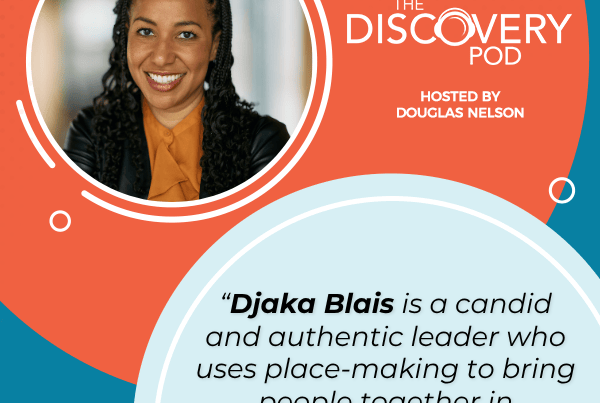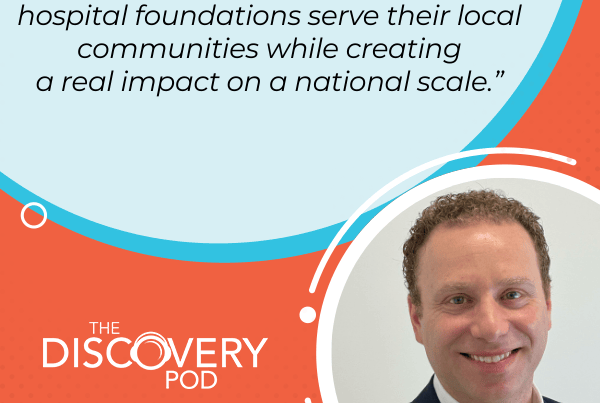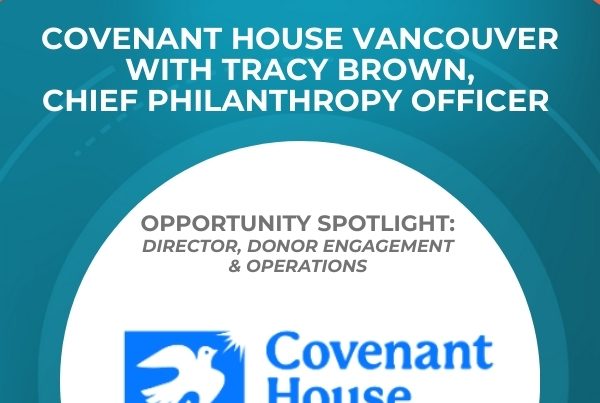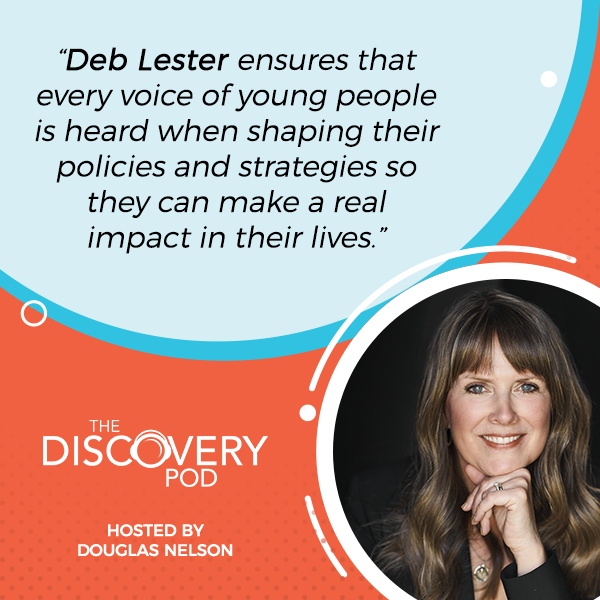
Covenant House Vancouver has been serving young people to help them get out of homelessness and provide them with everything they need to enjoy a comfortable life. Its CEO, Deb Lester, provides a glimpse of what they are doing behind the scenes to make a real difference for youth at risk. In this conversation with Douglas Nelson, she shares what it takes to be a leader in an already effective organization and what it takes to bring it to the next level. Deb talks about the role of her experiences on the frontlines of health, education, and social services in bringing people together to protect and safeguard the youth.
—
Listen to the podcast here
Covenant House With Deb Lester, CEO
Hello and welcome to the Discovery Pod, conversations with social profit leaders. I’m your host, Douglas Nelson. In this episode, we answer the question, “Have you ever wondered what it takes to make a real difference in the life of a young person at risk?” Our guest, Deb Lester, the CEO of Covenant House Vancouver, knows the answer to that question. She and her colleagues answer that question every single day. Deb is a visionary leader and clinician who has lived and worked across the world, gathering experience on the frontline and in executive leadership positions in the health, education, and social services sectors.
In our conversation, she shares what it takes to be a leader in an organization that is already very effective and helps to take that and inspire that organization to move to the next level, while remembering what it’s like to live in Canada again after so many years abroad. Deb is the picture of humility in leadership. She has a clear idea about the current place the organization plays and where it is headed. For those who are looking to step into a CEO or an executive director role in the next year or so, you’re going to want to listen to her approach to leadership and what it takes to move an organization forward. It is an exceptional conversation and one I’m proud to share. Please enjoy my conversation with Deb Lester.
—
Hello and welcome to the Discovery Pod, Deb.
Thanks so much. I’m so happy to be here.
Deb Lester And Covenant House
Deb, we’ve got a great conversation to get into. We’re going to cover some important topics. Before we do that, tell our audience about the great work of Covenant House and who you serve.
Covenant House has been in Vancouver for 28 years this year 2025, which is pretty remarkable in terms of a long tenure here serving young people in the province. I will start by saying that Covenant House is part of an international federation, and many don’t know that. There are 34 independent sites across the Americas, so the United States, Latin America, and two in Canada, Toronto and Vancouver. Toronto was our first Canadian site, and then Vancouver was incepted in ’97. It’s amazing to look back through the years of Covenant House and its evolution here in Vancouver. We are more than just a shelter, and not that shelters are just. They are incredibly important in our community, but there’s a lot more that we have under the umbrella of Covenant House.
We have a full continuum of care that serves young people from the age of 16 to 24. We do a lot beyond 24 as well in terms of support in the community. We’ve evolved our programs to have a one-size-fits-all approach. When a young person comes to Covenant House, we’re able to talk to them about maybe where they’ve come from, and often they’re coming with different traumas and different situations that have brought them to our doors. We can work with them to figure out where the right place is in the continuum.
The continuum will go right from what we call our drop-in and our outreach program, where we have our youth workers who are on the streets in Vancouver, working to make those connections with young people who are on the streets. Often, there’s a lack of trust and some traumas there. We’re looking to establish those bonds with young people and then invite them back into our drop-in center. The continuum moves on from there. I can talk a lot about that. In any of the programs that young people access at Covenant House, we have wraparound services for them as well, all situated in the social determinants of health. It’s a pretty wholesome array of services here.
Just recognized it’s an essential service in Vancouver, and I’m sure wherever there is a Covenant House. Deb, what drew you to the role as CEO of this organization?
It’s an interesting story because I left Canada in 1989. I said I was going to be gone for six months and went on this journey around the world. I was working in international development. I was working on health and social system strengthening with young people around the world. I arrived back home, leaving for six months, and came back 30 years later. I wanted to look at the services that were needed here in my country, and maybe bring some of the learnings I’d had over those years back to Canada.
I’d been here many times throughout those years, but until I was living back in BC, I didn’t truly recognize the state of our young people and the state of our mental health crisis here in my country. I wanted to look at how I could effect change. I had a long career in public health and leading organizations. Through some of the conversations and networks, I learned about Covenant House. What struck me was the incredible continuum of services. When I think of a young person who is feeling hopeless or helpless, and to have all of the services right there under one umbrella, it’s what I would consider service-excellent. I was smitten the minute I walked through the doors here.
It sounds like they’re very fortunate to find you. I’m curious about the scope of public health. Looking across the country, looking across the globe, it has an astounding scale to it. How do years looking through that lens apply or help with the work and servicing the community that you are serving?
It’s such a good question. One of the things I’ve been talking a lot to the team about is that when we look at the mental health crisis, we look at that alone, but all of these pieces, this intersectionality of those that are unhoused, of the affordability crisis, of the toxic drug supply. These are, in many essence, a public health crisis. We look at it through that lens.
Often, when we think of homelessness, there’s a misunderstanding that it means a roof over somebody’s head, and then everything will be okay. I always say, “It’s housing first, but it’s not housing only.” It’s through housing that we can bring that health and that well-being with those social determinants of health, which are your housing, your food security, employment, schooling, race, gender, all of those different determinants. The public health lens very much applies to the work that we’re doing here.
Through housing, we can bring health to everyone and its social determinants: food security, employment, race, and gender. Share on XHead Fundraiser In A Philanthropic Work
That makes perfect sense. I appreciate you sharing that. One of the other hallmarks of Covenant House here in Vancouver, and anyone who has been in the social profit sector here, knows that philanthropy plays a very significant role in your organization. What did you find coming into an organization with such a deep and rich culture of philanthropy that now you’re the head fundraiser? What was that like?
I was so impressed when I met the team. We do a lot of outreach and work with other organizations that are in different stages of their development. I think that’s a great partner, and that we always pay it forward to those who are either starting out or in a different evolution. When I looked at Covenant House, I saw a mature nonprofit. When you think about that hill you’re climbing, as you’re going from that startup phase to that mature phase, and looking at the philanthropy team and the philanthropy work that’s done, I looked at it as an example of service excellence. There’s a lot of sharing that we can help others in the evolution of their philanthropic goals, how you build teams, and look at philanthropy. It’s amazing.
This is truly what I would say is the power of what a community can do when we lock arms and we’re united in a mission, because Covenant House stands for that. When I walked in the door, it was 98% privately funded. It’s the community that built this. We finished a capital expansion, which I’m sure you know about. Three beautiful buildings here in Vancouver were built. It was a dream that began in 2015, three gorgeous spaces that are to send the message to young people that you’re worth it. We call them purpose-built because our young people helped in the design. Their voices were very important to what was put in place here. That was all driven by the philanthropic community here.
I think that stands as a real testament in terms of what the community can do. It’s also allowed Covenant House to be agile. As the needs in the community are changing and shifting, we can change and shift with them. Many of our community and our donors have been with us for a long time, since the beginning days. They have been with us, as I said, as great partners in all of this work as we evolve it, and we try and respond to all of those emerging needs.
It is a remarkable story of community support over the last 28 years. I remember when it was new. I guess that says more about my age than Covenant House. In our work here at the Discovery Group, we’re often working with social service organizations that are 94%, 93%, and 88% funded by different levels of government, and looking to philanthropy to provide flexibility to do anything outside of that specific contract they have with the government. You have a very different kind of relationship with the government in that you do have that flexibility. Other than the agility, what advantages do you see, or how do you use that agility to partner with the government and other service providers?
I’ve worked with ministries of health throughout my career. I knew it was also important that we make sure that we strengthen all of the different relationships with the government. We’re doing this work together. We all want the same thing ultimately in our communities, looking at advocacy and how we can affect policy through the learnings that we have. If you think about the federations of Covenant House International, there are over 50 years of learning, and Covenant House Vancouver, 28 years. In that, we’ve got the advocacy arm of what we do, but we’ve also got the experience of the young people who have been in our operations that have evolved over many years.
In speaking with the government, also, as they’re trying to look at different problems that they’re trying to solve, or they’re looking at programming or whatever it is, they’re offering to be at those tables to help inform. We are at many of those in terms of bringing the voices of the young people and their experiences to make sure that those are heard when we’re looking at shaping policy and that but it’s in that relationship as well, in terms of us all moving towards the same mission for young people in our community. Funding aside, that relationship, in my opinion, is incredibly important.
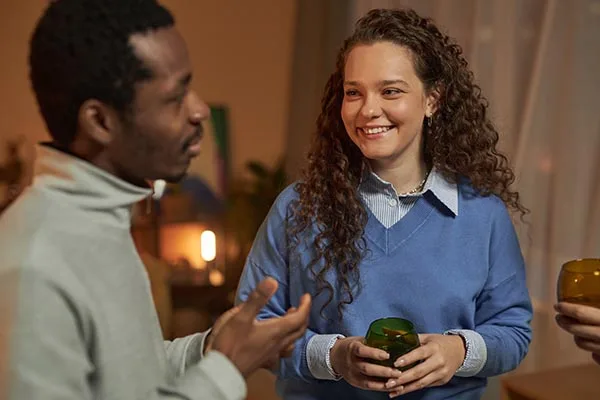
Young People: By listening to the needs of young people, we can move towards the same mission of helping them.
Why Donors Continue To Support Covenant House
Great answer and A-plus for diplomacy. That was good. What is the role of philanthropy and social change, and social transformation in supporting the needs of the community? I think there has been a lot of, in some cases, very appropriate criticism of the role of philanthropy. Through our work here, we see the incredible impact that donors can have through their support, particularly support over an extended period of time. You mentioned that your organization has a number of donors who’ve been with you from the beginning. As a relatively new leader coming in, what have your donors told you about the organization and why they’ve continued to support it as generously as they have?
It was clear to me that they’re as locked to the mission as we are. When speaking with our donors and talking about their history, whatever that looked like, it was clear that the mission spoke to them. In terms of young people, maybe their own personal experiences or those of our family members, there was a real dedication, a real commitment. I think about one of our big signature events, which is Sleep Out. We have a session that we call our breakout session. We have a lot of our returning sleepers that we do a session with. They are there as a community that wants to support, and they want to help. They’re asking, “What are the next chapters of Covenant House?” or, “What is it that’s keeping you up at night?” They want to dig in and help with that, and they have.
I’ve been here for a couple of years now, and I think about the conversations we’ve had, and how they’ve stepped in and helped to shepherd the way. Whatever that looks like, I know that I can call on them if I need something, or if there’s something that I want to talk with them about, or whatever that is. It’s truly been remarkable for me to look at what that connection has been and what it continues to be.
I think Covenant House here in the Vancouver context is such an example of an organization that has built those long-term relationships. The campout is an event that everyone knows about. I think certain parts of the year, in the mid-fall, everyone gets a lot of emails from people who are doing it to support them. It is a testament to an organization committed to community and supported by the community, which I think is worth holding up and celebrating.
I think that, too. As longer I’m here, that inspires me. I get goosebumps now when I’m talking about it, because truly, when you walk through the doors and you see these beautiful spaces, this was the community that did this, and the community built this. It was a community coming together and doing this. For me, that’s incredibly powerful. Our young people will talk about that as well. A lot of our youth alum who are often coming back and with whom we stay in contact say the same. They think about the community supporters and those who were here for them as they were on their journey towards health and well-being.
Covenant House’s New Strategic Plan
I want to go back to something you mentioned earlier. You mentioned you’ve got a new strategic plan. We don’t usually break news here on the Discovery Pod, but is there anything big coming out of that strategic plan?
The Federation, Covenant House International, we were all informed of the grand plan of what the Federation’s going to look at. We looked at three pillars in that plan, and we’re calling it The Journey Home. Our vision is to end youth homelessness. That’s a pretty bold vision, a big north star that we’re all going to move towards. We think about seven generations. We think about starting to lay the bricks now towards ending youth homelessness, doing everything we can through the work that we do, hopefully building on that, and looking at our generations and what we can hopefully accomplish. We have three pillars in that: prevention, intervention, and restoration. Intervention is what all of the Covenant Houses are doing across the Federation.
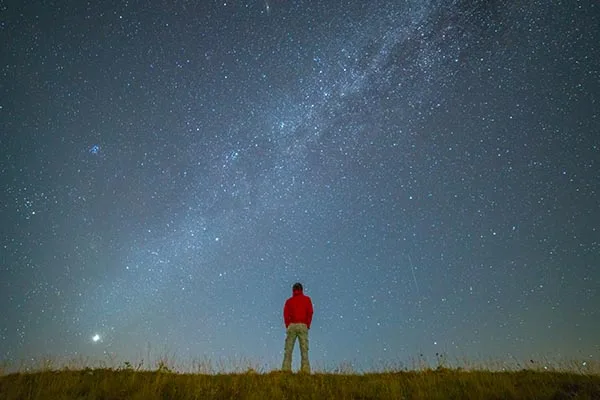
Young People: Our vision is to end youth homelessness. It is our north star, and we are thinking about seven generations.
Prevention is going to be a big part of it now, especially for Covenant House Vancouver. Vancouver and Toronto are the two largest sites in the Federation. In some ways, we can also help support our other sites. Prevention will be a lot about advocacy and a lot about getting upstream of what the issues are, hopefully, trying to look at policy, looking at education, educating on what we’re seeing, what the young people are telling us, and what’s bringing them here, and looking at the outcomes. We have an incredible team here that’s Research, Evaluation, and Learning, that’s monitoring the work and looking at outcomes. We know that even as young people are leaving Covenant House up in the high 80s to 90 percentiles in terms of adhering to some of their goals and plans.
We know that there’s a lot of this that works for young people, and we want to make sure we talk about that in that part of the pillar. You’re going to see a lot more of that in the new strategic plan, coming to different additional tables that we haven’t been to, and bringing that voice. As I said, intervention is sandwiched in the middle. It’s what we’re all doing, intervening. Restoration will be the other pillar, where we look at whether a young person comes through the continuum here at Covenant House and they’re ready now to step back into independent living in the community, how do we ensure that that bridge is as solid as we can make it? How can we give them the best possible start to that independence and assist with that?
Like we do with our children, if we have children in our homes, how do we make sure that that transition is as seamless as can be? We’ll be very focused on that part as well. Even though we say we serve 16 to 24, a lot of our youth, as we call them alumni, call us for many years after for advice or connecting with those that they care about here, that they’re close to. We’ll continue to look at that piece as well.
We’ll have no small ambition step.
We’re ready.
How Advocacy Interacts With Daily Work
I’m so glad you mentioned that around prevention and the conversation around advocacy. If we look across the social profit sector in Canada, the role of advocacy in health organizations and social service organizations, and those that blend them as yours does, blend those two, is often quite challenging or can be quite challenging. For boards to get their heads around, are we providing service? Are we advocating? Do we move away from providing service because we want to put our energy into advocating and making the system change? The dynamic, alive conversations around board tables across our sector, you’re doubling down on the language you used on advocacy. How does advocacy interact with the work you’re doing day to day at Covenant House?
It’s important that we, first of all, learn. We’re learning every day. The landscape of the young people that we are seeing now, compared to even a decade ago or two decades ago, our team tells us unanimously that the needs are like they’ve never seen before. Some of our staff have been here throughout the duration, and the mental health needs. As we know that often with mental health that’s been untreated and unsupported, substance use can come in, in terms of self-medicating. For that alone, if you use that example in terms of advocacy, we’re bringing that to the community to talk about how the needs that we saw a decade ago are very different from what we’re seeing now. The landscape has changed tremendously.
That would be an example of, in our day-to-day operations, learning from what we’re doing and bringing that to the community. There are so many other examples that I can give you. We have low-barrier programs, like one of our programs is for young people who are coming in, and the trauma is pretty profound. What we’re doing is trying to keep them safe under our roof. If they’re not ready for the other programs, let’s get them in the door and let’s keep them safe. We’ll start to build those bonds of trust in that relationship. We opened that program in partnership with Vancouver Coastal Health and the Ministry of Health. We opened in June. A very high percentage of those young people, after they’ve been here, want to move on to another program here.
They’re ready to tackle their substance use and start to look at that, or they want to go into another program where we have case management, and start to work on goals. I think that’s profound. In terms of advocacy, we can talk about that and talk about how that type of support translates into affecting change. We know that in adult homelessness, the majority of adults will say it began when they were young. If we can get ahead of this and start when our young people are struggling, then we can hopefully help to avoid this as our community transitions into adulthood. Those are a few examples. There are so many that we can bring that will affect what we do, and bring them to the public as well.
Most adult homelessness began when they were young. If we can get ahead of this and help struggling young people, we can stop this problem from reaching adulthood. Share on XBalancing Service Provision And Advocacy
It also sounds like, as an organization, you’ve invested in the research capacity to be able to translate the good work that happens on a day-to-day basis into indications of success and programs leading to social change, being able to amplify the successes. I’m sure there are some learnings, those things you do differently. You did it a couple of years ago. Being able to champion those learnings and share those with others is important. As a CEO, how do you balance those conversations around service provision and advocacy with your board?
We always have an incredible board. At Covenant House, they’ve always been so incredibly supportive, but always making sure that we look at strategy around communications, and we look at our structure around communications. It evolved as the organization grew, and maybe communications was philanthropy-focused. We start to think about when you want to get upstream, then how do we make sure in our messaging that we have? We look at advocacy as well. You look at the foundations of what we want to communicate and how best to do that. Those conversations with the board are very much in line with that, as we talk about that strategy and what that could look like. The board is incredible. We have one a day with them a year, where we do what we call our board advance.
We will do a topic for a whole-day session. We might do a session on harm reduction or a session on some of these different pieces of the work that we do that we’re heavily involved in. When we have discussions around how we talk about things, there’s a deep understanding of the work that we do. The board is very active in the work that we do in the community and spends time with our team on outreach. They go out with our teams, and they spend a day going out into the Downtown Eastside with the teams. If there’s different work happening, we’ll have them come in and spend time. Once they’ve learned from the team, then they’re able to understand what that vision looks like around advocacy and philanthropy.
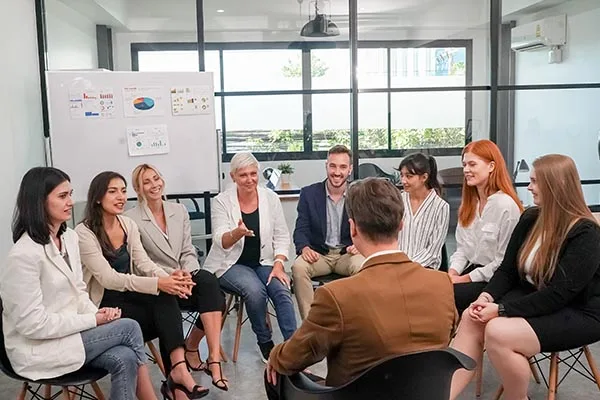
Young People: Once the board learns from the team, they can finally understand what the vision looks like around advocacy and philanthropy.
You’ve put your finger on one of the biggest challenges that we see in our work with boards and organizations. When boards don’t understand or don’t have full insight or insight into what an organization does or how the business works, they don’t always give the best advice. It sounds like you’ve done a good job of bringing your board along and educating them about the good work and how the work takes place.
It’s such a great partnership with the board because we’ve got such incredible expertise. Even as we’re looking through strategy, the future, and all of us coming together and bringing that, I feel very fortunate in terms of the team and our objectives and what we want to look at in conjunction with and having the board involved in those conversations. From a strategy standpoint, it’s been incredibly invaluable.
Seeking Support On A Difficult Day
That’s great to hear. That relationship with the board is so vital in the life of a CEO of an organization. When it goes well, it’s amazing. When it goes less than well, it’s less than amazing. Totally changing the topic away from boards because I’m going to ask about hard days, and I don’t mean about your board. As a CEO who has this tremendous international experience, coming to an organization that is successful and deals with some very difficult things and individuals in difficult places, when you have a hard day, who do you turn to have a conversation about either an issue or to process something that may have happened?
I have a number of people that I turn to. First of all, I’m fortunate to have a great CEO network that we spend lots of time together. That’s been incredible to have colleagues who will understand what it is we’re all maybe dealing with, a different part of our population, but we have that deep understanding together. Those networks, I feel very fortunate to have. Especially moving back to Canada after being away so long, having new friends here has been amazing. We’ve become close over that period of time. The team here, as well. Depending on what it is, our senior leadership team makes sure that we’re there to support each other during those difficult times.
As you know, we’re in a very complex time in our community, and young people are right at the center of that. There are days when we just have to support each other and lean on each other. That’s an important part for me in terms of our employees and the work that they do, but also all of us together, because we all care so deeply about the work that we do. Of course, family, your networks, your community. I’m lucky to have a partner who has been, and is, incredibly supportive as well.
Reinforcing A Creative Culture
That connection to colleagues, team, and family, there’s a magic sauce in there somewhere, or maybe that is the magic sauce to be able to process those things. You mentioned the leadership team and the support that the leadership team needs to provide to others in the organization who are directly involved in providing the services. As a CEO, how do you think about creating that supportive culture or reinforcing that creative culture? I go back to the time when I was the CEO of the BC Cancer Foundation, and often, many of our team were hearing stories of great sadness and tragedy on a very regular basis.
The way we talked about it was that because people share generously, in many cases, share these very difficult stories that can be hard to process or relate to our own lives, we owe a debt of kindness to each other. We don’t know what someone may have been dealing with on any given day. In your organization, which is one of the models of success in the work that you do, there are still those hard stories every day. How do you contribute to that supportive culture for your team?
I talk about it a lot. That’s one thing. Even from the leadership team, we have a series of events where we bring our leaders together across the organization, and then we bring all the teams together. We have that cadence quarterly, at least. We talk about how their wellness and what they do is so incredibly important to me, but to the leadership, to all of us in the organization. It’s a pillar in our new strategic plan as well. I want to live it every day so that we send that message to the team. We do have a lot of mechanisms for employee wellness, especially because of the work that we do. We make sure that we’re communicating that regularly for all of the team to encourage access because, as you say, what they’re seeing and hearing every day is incredibly challenging, and they care so deeply.
We even have these two chairs that we have in every part of the organization. The big domes on them, and you can go in, you can rotate in them, you can be in a space, put some headphones on, and take some time if you need to. There’s a space that’s always there, but we’ve got many spaces here. We try and think about all the different avenues where we can support the team. One mantra, if you’d say, or something that I always try and hold close to me, especially when I was working internationally, and I have thought about this at Covenant House, I call it my covenant in six, is “One young person at a time.”
If we affect change in just one life, and I don’t mean just, but in one life, then we are on the right track. When things feel overwhelming, if you feel like you’re going backwards, or the situation feels overwhelming, which it does at times, remember that if we’re affecting change in one life, then we are on the right track. It’s looking at it in that way and in that light. As you say, there are days, so making sure that we’re wrapping our arms around each other as well.
If we make change in one life, we are on the right track. Share on XThat’s great to hear. With organizations that we’ve been working closely with in 2024 or so, staff wellness is often one of the first, if not the first, questions that boards are asking. What are we doing to protect our team? What are we doing to support people? They are aware of how difficult it is to attract and retain people, and the challenging situations they’re doing the work.
You think about it in the nonprofit space, too. We think about even retention. We have a market out there. We have an affordability crisis. You think about all that we can bring in to make sure that we give our employees as much as we can, because nonprofits are maybe challenged a little more on that piece.
Next Chapters Of Covenant House
Especially in the environment today. Deb, as we come to the end of our conversation, what are you looking forward to?
I’m looking forward to our strategic plan, the next chapters. In November, we completed this ten-year dream of the capital expansion. I tell the prior CEO, I think about her all the time when I’m sitting in this space, and I think about all the work that went into getting to this point in time. I think about 30 years of deep learning, how can we now leverage where Covenant House sits and those learnings to help our partners in the community, do outreach as much as we can to others and increase impact, and be here for young people in our community and beyond. I’m excited about that work. I’m excited about the advocacy piece and very optimistic about those next steps in our story.
That’s great to hear. I wish you all the best in those steps. We’ll certainly be watching to see the great work that you and your colleagues continue to do. Thank you for being on the Discovery Pod.
Thank you so much for having me. I’m very grateful.

